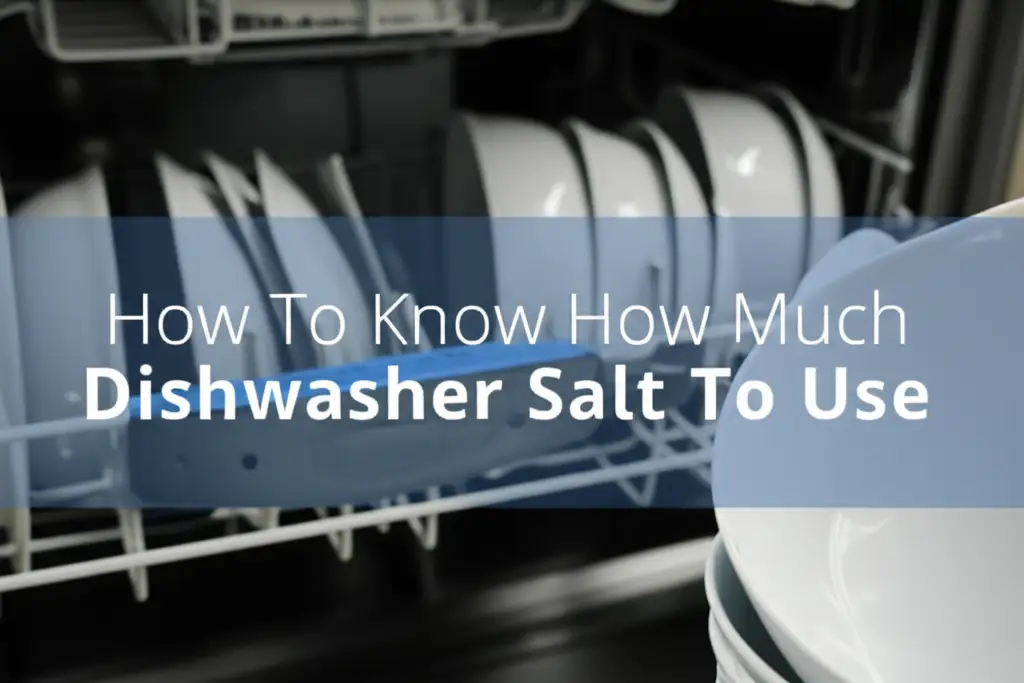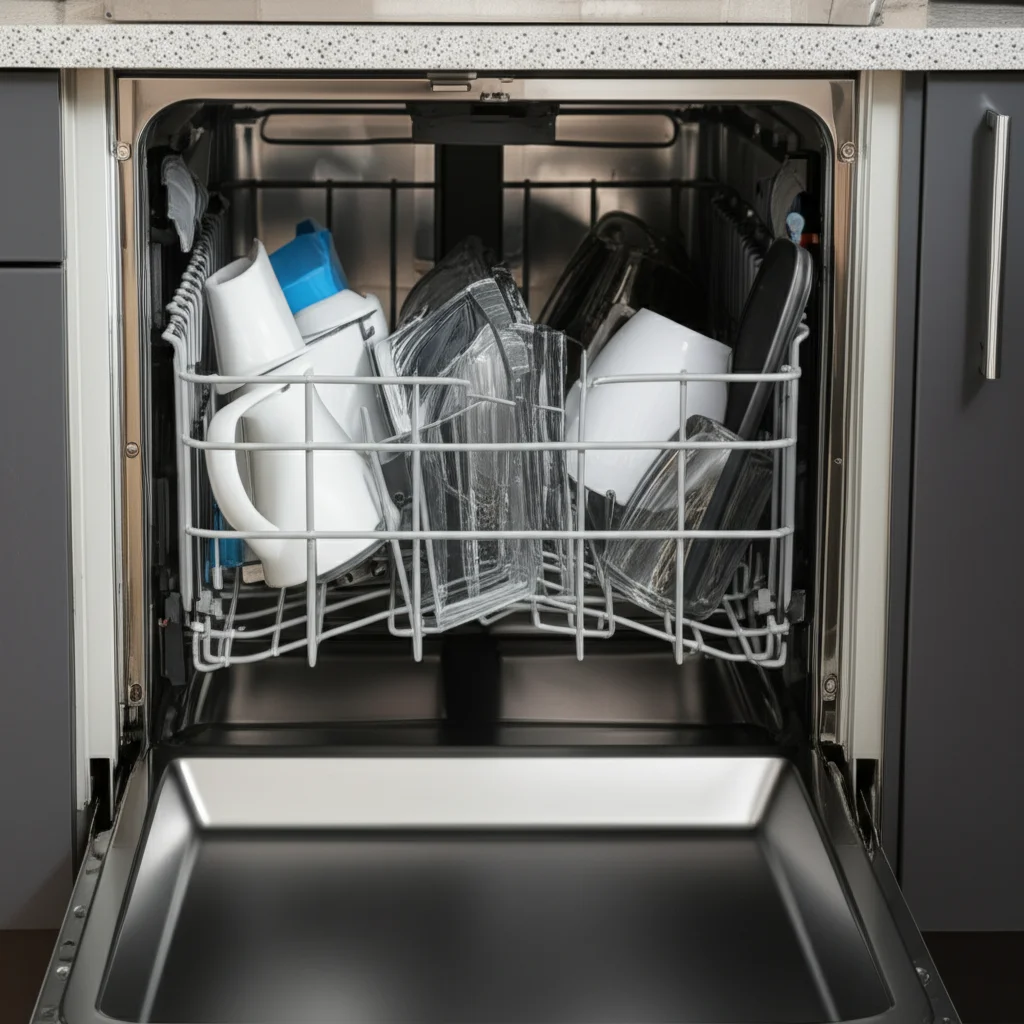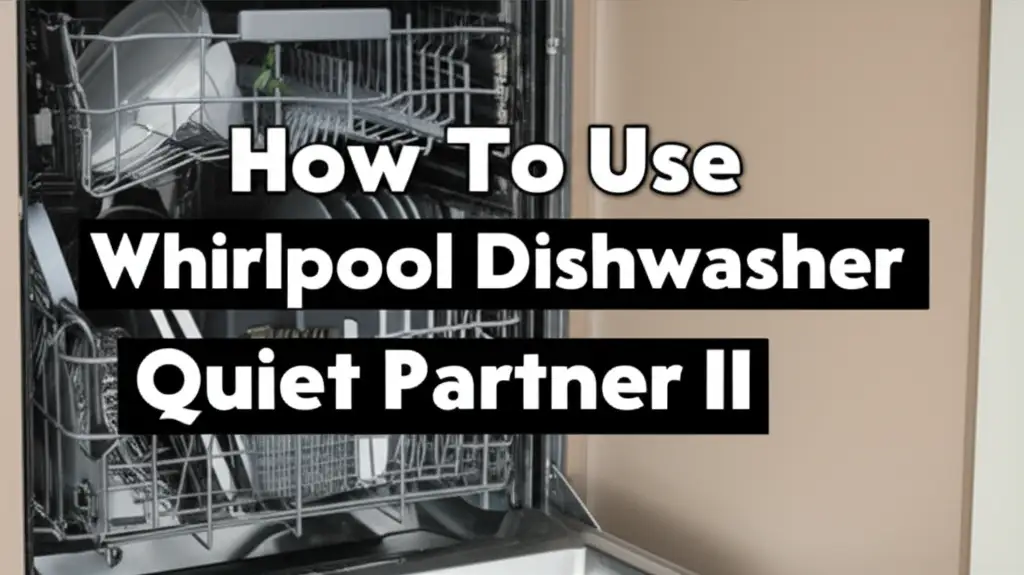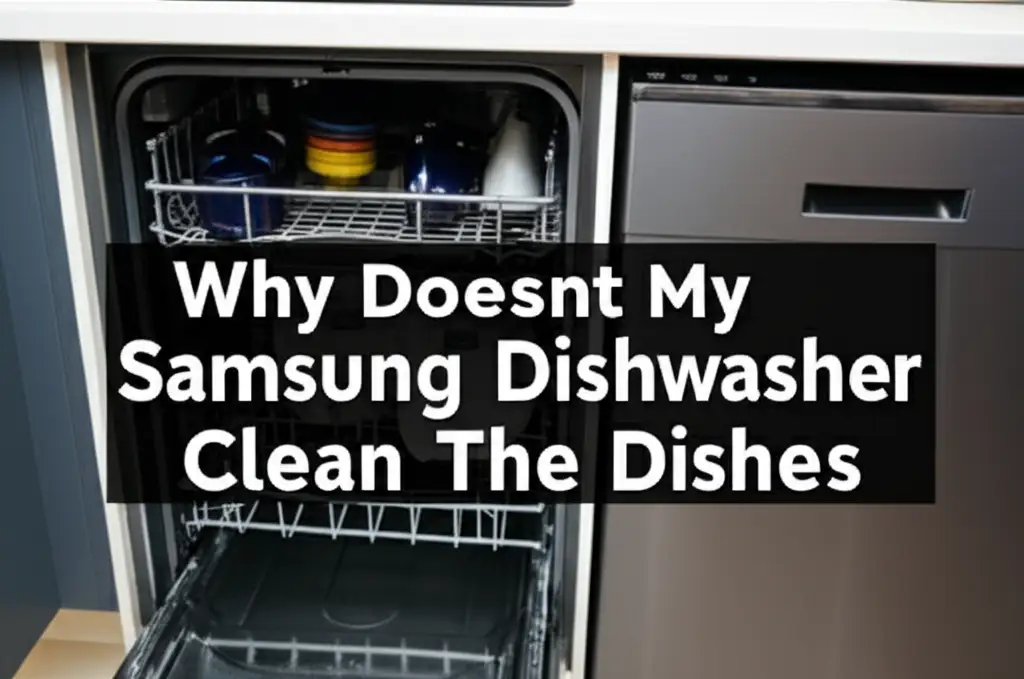· Todd Martin · Home Appliances · 17 min read
How To Fill Rinse Aid In Electrolux Dishwasher
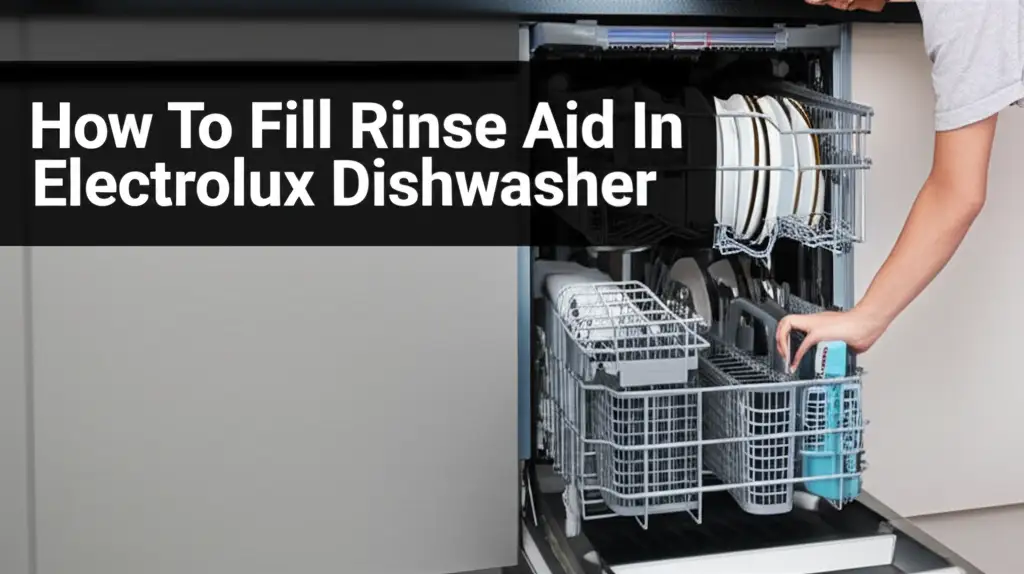
Fill Rinse Aid in Electrolux Dishwasher for Spotless Dishes
Have you ever unloaded your Electrolux dishwasher expecting sparkling clean dishes, only to find them covered in unsightly spots and streaks? It is a common problem. The solution often involves one simple additive: rinse aid. Properly filling rinse aid in your Electrolux dishwasher is key to achieving crystal-clear results.
Many people overlook this vital step in dishwasher maintenance. However, rinse aid plays a crucial role in the drying process. It helps water sheet off surfaces, preventing mineral deposits from forming. This article will guide you through the process of filling rinse aid in your Electrolux dishwasher. We will cover location, proper technique, and common troubleshooting tips. By the end, you will understand how to keep your dishes looking their best.
Takeaway
- Locate the rinse aid dispenser on your Electrolux dishwasher’s inner door.
- Open the dispenser cap by twisting or lifting it.
- Pour liquid rinse aid carefully into the dispenser opening.
- Fill the dispenser until the indicator shows it is full, avoiding overfilling.
- Close the dispenser cap securely to prevent spills.
To fill rinse aid in an Electrolux dishwasher, open the inner door and locate the circular or oval dispenser on the inside panel. Twist or lift the cap to open it, then pour liquid rinse aid into the opening until the indicator shows full. Close the cap firmly to prevent leaks during the wash cycle.
Understanding Rinse Aid’s Role in Your Electrolux Dishwasher
Rinse aid is a simple product, but it makes a big difference in how your dishes look after a wash cycle. It is more than just a cleaning agent. Rinse aid is a drying agent. It works by reducing the surface tension of water. This allows water to run off dishes more evenly.
Without rinse aid, water often forms droplets on dishes. As these droplets dry, they leave behind mineral deposits from your water supply. This causes spots and streaks. This is especially true if you live in an area with hard water. Electrolux dishwashers, like most modern appliances, are designed to work best with rinse aid. Using it ensures optimal drying performance. This leaves your dishes, glasses, and cutlery spot-free and ready for use.
Imagine pulling out a stack of clear glasses that sparkle. That is the power of rinse aid. It is not just about aesthetics. It also helps your dishes dry faster. This saves energy and time. It also prevents excess moisture from remaining inside the dishwasher. This helps keep the appliance fresh and clean. Many people wonder why this extra step is necessary. Simply put, rinse aid allows water to sheet off dishes rather than cling to them. This sheeting action helps prevent those annoying water spots. You can learn more about the general purpose of rinse aid and why it is so important for your dishwasher’s performance by visiting our guide on why do I need rinse aid in dishwasher. Using rinse aid ensures your Electrolux dishwasher delivers the best possible cleaning and drying results every time.
Locating the Rinse Aid Dispenser on Your Electrolux Model
Finding the rinse aid dispenser on your Electrolux dishwasher is usually straightforward. Most Electrolux models place the dispenser in a standard location. It is typically found on the inside of the dishwasher door. You will see it near the detergent dispenser. Look for a small cap or cover, often circular or oval in shape.
This cap usually has a symbol indicating rinse aid. The symbol often looks like a fan or a starburst. This makes it easy to identify. The dispenser may be labeled “Rinse Aid” or “Rinse Agent” as well. Some models might have a clear window or indicator light. This shows the rinse aid level. Different Electrolux models might have slight variations in the design of the cap. Some caps twist counter-clockwise to open. Others might have a small latch or button you need to press.
Always ensure the dishwasher door is fully open when you are looking for the dispenser. This gives you clear access. If you are having trouble finding it, consult your Electrolux dishwasher’s user manual. The manual provides specific diagrams for your exact model. Understanding the dispenser’s location is the first step. It allows you to correctly fill it and keep your dishes sparkling. My Electrolux dishwasher has a small lever on the side of the dispenser. I just push it down and the cap pops open. It is a simple design that makes refills easy. Once you locate it, the rest of the process is simple and quick.
Step-by-Step Guide: How to Fill Rinse Aid in Your Electrolux Dishwasher
Filling the rinse aid dispenser in your Electrolux dishwasher is a quick task. Following these steps ensures you do it correctly and safely. Proper filling prevents spills and ensures your dishwasher performs its best. Let’s walk through it together.
Prepare for Filling
First, gather your supplies. You will need your chosen liquid rinse aid. Make sure your Electrolux dishwasher is empty and the door is fully open. Having a paper towel or cloth nearby is also a good idea. This helps clean up any drips.
Open the Dispenser Cap
Locate the rinse aid dispenser on the inner door panel. It is usually next to the detergent dispenser. Identify the cap or cover. For most Electrolux models, you will either twist the cap counter-clockwise to unlock it, or lift a small latch to pop it open. Some newer models might have a push-to-open mechanism. Ensure the cap is fully open to allow for easy pouring.
Pour the Rinse Aid
Carefully pour the liquid rinse aid into the opening. The dispenser often has a fill indicator. This might be a clear window or a marked line. Fill the compartment until the indicator shows it is full. Avoid overfilling, as this can cause spills and excessive foaming during the wash cycle. Overfilling can also lead to streaks. If you do accidentally overfill, you might wonder how to get rinse aid out of dishwasher. Generally, a small spill inside the dispenser area is fine, but large spills should be wiped up.
Close the Dispenser Cap Securely
Once the dispenser is filled, close the cap firmly. Twist it clockwise until it clicks into place if it is a twist-lock cap. For pop-open caps, press down until it latches securely. A properly closed cap prevents rinse aid from leaking out during the wash cycle. This ensures it dispenses correctly when needed. You are now ready to run a cycle with optimal drying power. I always double-check the cap to make sure it is tight. It saves me from a messy cleanup later.
Choosing the Right Rinse Aid for Your Electrolux Appliance
Selecting the right rinse aid for your Electrolux dishwasher is important. While many brands are available, some choices work better than others. Most Electrolux dishwashers are compatible with standard liquid rinse aid products. These products are readily available at grocery stores and appliance retailers.
Liquid Rinse Aid Products
The most common type of rinse aid is a liquid formula. Brands like Finish, Cascade, and Somat offer liquid rinse aids designed for all dishwashers. These products are effective at reducing water spots and improving drying. Look for rinse aids that specifically state they are for automatic dishwashers. Electrolux does not typically require a specific brand. However, using a reputable brand ensures good performance. Always follow the manufacturer’s instructions for the rinse aid product you choose.
Rinse Aid in Detergent Tabs
Some dishwasher detergent tabs include rinse aid as part of their formula. These “all-in-one” tabs can be convenient. They eliminate the need to fill the rinse aid dispenser separately. However, the amount of rinse aid in these tabs might not be sufficient for all water conditions. If you have hard water, you might still experience spotting. In such cases, adding extra liquid rinse aid to the dispenser is often beneficial. This boosts the drying power for better results.
Natural Alternatives: Vinegar
Some people consider using distilled white vinegar as a natural alternative to commercial rinse aid. Vinegar does have mild acidic properties. These properties can help reduce spotting. To use vinegar, fill the rinse aid dispenser with distilled white vinegar. Do not use regular vinegar. Distilled white vinegar is purer. However, using vinegar carries some considerations. It is less effective than commercial rinse aids. It also does not provide the same drying benefits. Over time, vinegar might affect rubber seals or certain dishwasher components. Always check your Electrolux user manual before using alternatives. Some manufacturers advise against it. If you are exploring this option, you can find more information about how to use vinegar as rinse aid in dishwasher and can vinegar be used as rinse aid in dishwasher to understand the pros and cons fully. While it is a choice, commercial rinse aids are formulated for optimal dishwasher performance and component safety.
Adjusting Rinse Aid Dosage for Optimal Electrolux Performance
After filling your Electrolux dishwasher with rinse aid, the next step is often to adjust the dosage. Most Electrolux models allow you to control how much rinse aid dispenses during a cycle. This adjustment is crucial for achieving the best results. It prevents common issues like streaking or poor drying. Getting the dosage right optimizes your dishwasher’s performance. It also helps conserve rinse aid.
Why Dosage Matters
The amount of rinse aid needed depends on several factors. Water hardness is a primary concern. Hard water contains more minerals. These minerals can leave spots. So, hard water usually requires a higher rinse aid dosage. Soft water, on the other hand, might need less. Too little rinse aid leads to water spots and wet dishes. Too much rinse aid can cause foamy residue or streaking on glasses and dishes. Finding the correct balance ensures crystal-clear, dry dishes. It also means you are not wasting rinse aid.
How to Adjust Electrolux Rinse Aid Settings
Electrolux dishwashers typically have a setting for rinse aid dosage. This setting is usually accessed through the control panel.
- Consult Your Manual: The exact steps vary by model. Always refer to your Electrolux dishwasher’s user manual first. It will provide precise instructions for your specific model.
- Accessing Settings: Often, you will need to enter a “settings” or “options” menu. This might involve pressing a combination of buttons. For example, you might hold the “Start” button and then press “Delay Start.”
- Adjusting Level: Once in the rinse aid setting, you can increase or decrease the dosage level. Levels typically range from 1 (lowest) to 5 or 6 (highest). Start with a medium setting, like 3, and adjust from there.
- Testing and Fine-Tuning: After adjusting the setting, run a few wash cycles. Observe the dishes. If you see spots, increase the dosage by one level. If you notice streaks or a sticky film, decrease the dosage. It takes a little trial and error to find the perfect setting for your water conditions. I found that my hard water needed a higher setting. It made a huge difference.
Adjusting the rinse aid dosage is a simple optimization. It greatly improves your Electrolux dishwasher’s efficiency. It also guarantees beautifully clean dishes every time.
Troubleshooting Common Rinse Aid Issues with Electrolux Dishwashers
Even with rinse aid, you might encounter issues. Problems like a persistent rinse aid light or dishes that are still wet can be frustrating. Understanding common issues helps you resolve them quickly. This ensures your Electrolux dishwasher works as expected.
Rinse Aid Light Stays On
A common issue is the rinse aid light remaining illuminated even after you have refilled the dispenser. This can happen for a few reasons.
- Sensor Glitch: Sometimes, the sensor inside the dispenser might not register the new fill immediately. This can happen if you do not fill it completely. Ensure the dispenser is filled to the maximum line.
- Stuck Float: The dispenser uses a float mechanism to detect the rinse aid level. If this float gets stuck, it will not correctly signal the system. Gently tap the dispenser area. This might free the float.
- System Reset: Try running a short cycle. This allows the dishwasher to attempt dispensing the rinse aid. It might reset the sensor. If the light persists, a complete power cycle (unplugging the dishwasher for a few minutes) might reset the internal computer. For more information on this common problem, you can read our article about why is the rinse aid light on dishwasher or a related article why is my rinse aid light still on. These resources offer broader insights into troubleshooting such issues.
Overfilling or Spills
Accidentally overfilling the rinse aid dispenser can happen. It is not usually a serious problem. However, it can lead to excessive suds or streaks.
- Wipe Up Spills: If rinse aid spills outside the dispenser, wipe it up immediately. This prevents it from entering the wash cycle at the wrong time.
- Reduce Dosage: If you consistently overfill or notice foamy residue, you might be pouring too much. Be more careful during refills. Also, consider adjusting your rinse aid dosage setting down if your machine allows.
- Excess Foaming: Overfilling can cause a lot of foam in the dishwasher. This foam can make dishes cloudy. If this happens, try running an empty rinse cycle. This helps flush out excess rinse aid.
Dishes Not Drying or Still Spotted
If your dishes are still wet or spotted despite using rinse aid, consider these points:
- Rinse Aid Level: Double-check that the rinse aid dispenser is actually full. The light might be off, but the level could be low if the sensor is faulty.
- Dosage Setting: Your current dosage setting might be too low for your water hardness. Increase the rinse aid dosage level in your Electrolux dishwasher’s settings.
- Hot Water: Ensure your dishwasher is getting hot water. Rinse aid works best with hot water. Check your water heater temperature.
- Dishwasher Cycle: Some dishwasher cycles, like “Eco” or “Quick Wash,” might use less heat or a shorter drying phase. Try a “Normal” or “Heavy Duty” cycle.
- Air Dry Option: Make sure you are not accidentally disabling the heated dry or air dry option on your Electrolux. Some models have an option to turn off the drying cycle.
Addressing these common issues helps you get the most from your Electrolux dishwasher and its rinse aid. My Electrolux once had the rinse aid light on forever. I just increased the dosage setting slightly. It fixed the problem for me.
Maintenance Tips for Your Electrolux Dishwasher’s Rinse Aid System
Proper maintenance of your Electrolux dishwasher, including its rinse aid system, ensures longevity and optimal performance. Regular checks and cleaning can prevent future problems. These simple habits keep your dishes sparkling and your appliance running smoothly.
Regular Rinse Aid Checks
It is important to check your rinse aid level regularly. Most Electrolux dishwashers have an indicator light or window. This signals when the rinse aid is low. However, it is good practice to visually check the dispenser every few washes. This proactive approach ensures you never run out unexpectedly. Running out of rinse aid can lead to spotted dishes. This defeats the purpose of using it. I usually check mine every week or so. I keep a bottle of rinse aid handy under the sink. Knowing when your rinse aid is empty is simple with these indicators. You can learn more about how to check by referring to our guide on how to know when rinse aid is empty.
Cleaning the Dispenser Area
Over time, small amounts of rinse aid might dry around the dispenser opening. This can cause a sticky residue. This residue might make the cap difficult to open or close. It might also attract dirt.
- Wipe Down: Regularly wipe the area around the rinse aid dispenser with a damp cloth. Do this after filling or as part of your general dishwasher cleaning routine.
- Remove Buildup: If there is sticky residue, use a warm, damp cloth with a tiny bit of dish soap. Wipe it clean. Ensure no soap enters the dispenser itself. Rinse the area thoroughly with a clean, damp cloth.
Overall Dishwasher Care Related to Rinse Aid
Rinse aid works best in a clean dishwasher. If your dishwasher itself is dirty, or if the spray arms are clogged, rinse aid cannot perform optimally.
- Clean Filters: Regularly clean the dishwasher filters. Food particles and grease can clog filters. This impacts water circulation and cleaning performance.
- Run Cleaning Cycles: Periodically run an empty cycle with a dishwasher cleaner. This helps remove mineral buildup and grime from internal components. This ensures water, and rinse aid, circulate freely.
- Inspect Spray Arms: Check the spray arm holes for blockages. Use a toothpick to clear any debris. Unobstructed spray arms ensure water reaches all dishes evenly. This allows rinse aid to do its job effectively.
By following these maintenance tips, you ensure your Electrolux dishwasher’s rinse aid system functions properly. This guarantees beautifully dry and spot-free dishes for years to come. My own Electrolux has stayed in great shape because I stick to these simple cleaning habits.
Frequently Asked Questions About Filling Rinse Aid in Electrolux Dishwashers
How often should I fill the rinse aid dispenser in my Electrolux dishwasher?
The frequency depends on how often you use your dishwasher and your rinse aid dosage setting. Most Electrolux dishwashers have a low rinse aid indicator light. When this light turns on, it is time to refill. For average use, you might refill it every few weeks to a month. Checking it visually every 10-15 cycles is a good practice.
Can I use vinegar instead of rinse aid in my Electrolux dishwasher?
Yes, distilled white vinegar can be used as a natural rinse aid alternative. It helps reduce water spots. However, it is generally less effective than commercial rinse aids for drying performance. Also, check your Electrolux owner’s manual; some manufacturers advise against long-term use of vinegar due to potential effects on rubber seals. Use it cautiously and sparingly.
What happens if I overfill the rinse aid dispenser?
Overfilling the rinse aid dispenser in your Electrolux dishwasher can lead to too much foam during the wash cycle. This might leave a sticky film or streaks on your dishes. It can also cause rinse aid to leak into the detergent compartment prematurely. If you overfill, wipe up any excess outside the dispenser immediately and consider reducing your dosage setting.
Why are my dishes still wet or spotted after using rinse aid?
Several factors can cause wet or spotted dishes. Ensure the rinse aid dispenser is full and the cap is secure. Your rinse aid dosage setting might be too low for your water hardness; increase it if needed. Also, check that your Electrolux dishwasher’s heated dry option is active. Sometimes, dish loading also affects drying by creating water traps.
Does Electrolux recommend a specific rinse aid brand?
Electrolux does not typically recommend a single specific brand of rinse aid. They usually state that any standard liquid rinse aid designed for automatic dishwashers is suitable. Brands like Finish, Cascade, and Somat are widely available and effective. The most important thing is to use a liquid rinse aid and follow its instructions, along with your dishwasher’s guidelines.
Is rinse aid safe for all types of dishes and glassware?
Generally, yes, rinse aid is safe for most dishes, glassware, and cutlery commonly washed in a dishwasher. It is designed to be non-toxic and rinse away completely. However, very delicate or hand-painted items should always be hand-washed. If you have concerns about specific materials, refer to the item’s care instructions or your Electrolux manual.
Elevate Your Dish Cleaning Experience with Electrolux Rinse Aid
Achieving impeccably clean and spot-free dishes from your Electrolux dishwasher is simpler than you might think. The secret often lies in one key component: rinse aid. Throughout this guide, we explored the crucial role rinse aid plays in minimizing water spots and enhancing drying. We covered everything from locating the dispenser to troubleshooting common issues. You now understand how to fill rinse aid in your Electrolux dishwasher.
Remember, regularly checking and refilling your rinse aid dispenser is a small habit with a big payoff. It prevents those frustrating streaks and ensures your dishes emerge sparkling every time. Adjusting the dosage specific to your water conditions further optimizes performance. This leads to crystal-clear results. My experience shows that this simple step truly transforms dishwashing. It takes your dishes from just clean to truly gleaming.
Do not let water spots dull your dishware. Embrace the power of rinse aid for your Electrolux appliance. Take action today. Check your rinse aid level and refill it if needed. Enjoy the satisfaction of perfectly dry, spotless dishes with every wash cycle. Your Electrolux dishwasher is ready to deliver its best performance when properly maintained.


